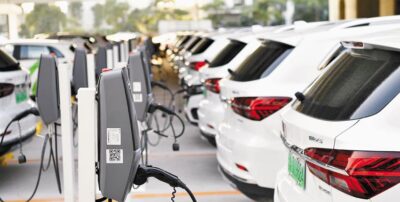>>REAL-TIME UPDATES IN THE WIRE. CLICK HERE<<<
China’s State Council has announced a new guideline for the country’s new energy vehicle sector for the period of 2021 – 2035, with annual sales of energy-saving and new energy cars estimated to account for 50 per cent of the country’s total by 2035.
New energy vehicles, comprising pure electric cars, petroleum-electric hybrids and vehicles that run on fuel cells, will make up one in five new automobiles sold in China by 2025, according to the development plan for released by the country’s cabinet on Monday. That represent a threefold jump from China’s NEV sales in 2019.
By 2035, the annual sales of electric vehicles will account for more than 95 per cent of all NEVs in China. From 2030-35, hydrogen and other fuel-cell vehicles will have a wide application, and the number of such vehicles will reach about 1 million.
In 2025, 2030 and 2035, the average fuel consumption of new cars including NEVs will reach 4.6, 3.2 and 2 liters per 100 kilometers, respectively. The average fuel consumption of new cars excluding NEVs will reach 5.6, 4.8 and 4 liters per 100 km.
High-level autonomous vehicles will enter the market by 2025, and will be widely used on highways by 2030. And by 2035, autonomous vehicles are expected to be able to run with other vehicles on the same road.
In terms of power battery technology, by 2035, China’s power battery technology will be in a leading position in the world, and a complete, independent and controllable power battery industry chain will be formed.
At that time, gasoline-powered passenger vehicles will be converted to hybrids, as NEVs will become the mainstream, said Li Jun, director-general of the China Society of Automotive Engineers which helped drafted the new guideline.
The automobile industry will realize electrification transformation; intelligent connected vehicle technologies will be mature and widely applied; a concerted, efficient, safe and controllable automobile industry chain will be formed; an intelligent mobility system comprising travel, energy and urban development will be established; the mechanism of technological innovation will be improved.
Analysts say the central government and local authorities are expected to roll out generous policies to entice buyers to ditch their petrol-guzzlers for electric vehicles, as well as give manufacturers and battery makers the incentives to invest in capacity.
The government will also splash money on building infrastructure, especially a network of charging stations in rural villages and the countryside to spur usage.
It is estimated that by 2035, the number of slow charging piles will total more than 150 million, comprising private and public ones. And the public fast charging poles will reach 1.46 million units, serving more than 150 million vehicles, according to the guideline.
At the same time, battery swapping will be widely used in the urban mobility service industry, which includes taxis and online car-hailing.
“The government has multiple leverages to boost electric vehicle sales, including public purchases, tax concession on EV, reduction on usage cost of EV, and increasing the cost of production and use for internal combustion engine cars,” according to a note from UOB. It added that China’s annualised sales growth could increase by 36 per cent between 2021 and 2025.
China’s NEV sales grew 5.1 per cent to 1.06 million units last year, accounting for less than 5 per cent of total new passenger car deliveries, according to data by the China Passenger Car Association (CPCA), an industry guild.
In the first nine months of this year, NEV sales fell 19.3 per cent to 601,000 units from the same period last year, due to coronavirus-induced disruptions in production and distribution of cars earlier this year, but most factories have returned to almost full production since then as China emerged from the pandemic lockdown.

